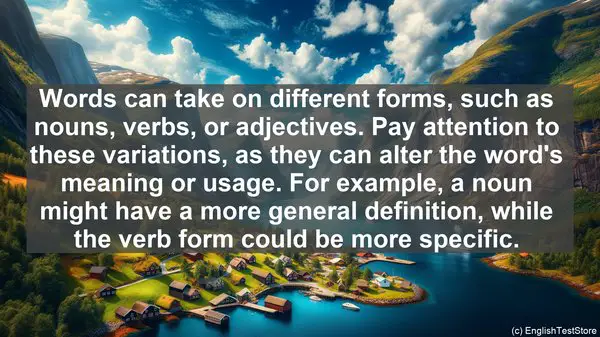Introduction
In today’s lesson, we’ll be discussing one of the trickiest aspects of the TOEFL Reading section: vocabulary-in-context questions. These questions require more than just a basic understanding of words; they demand a deeper comprehension of their usage within a given passage. But don’t worry! With the right strategies, you can master these questions and boost your overall score. So, let’s dive in!
1. Prioritize Context
When faced with a vocabulary-in-context question, always start by examining the surrounding text. Often, the passage provides clues about the word’s meaning or how it’s being used. Look for synonyms, antonyms, or even examples that can shed light on the word’s definition.
2. Break Down Word Components
Sometimes, a complex word can be intimidating. But if you break it down into its root, prefix, and suffix, you might find familiar elements that can give you a clue. For instance, ‘un-‘ often indicates negation, while ‘bio-‘ relates to life. These small hints can make a big difference in understanding the word’s overall meaning.
3. Consider Word Forms
Words can take on different forms, such as nouns, verbs, or adjectives. Pay attention to these variations, as they can alter the word’s meaning or usage. For example, a noun might have a more general definition, while the verb form could be more specific.
4. Look for Signal Words
Certain words or phrases in the passage can act as signals, indicating the word’s meaning or function. For instance, ‘however’ often introduces a contrast, while ‘similarly’ suggests a comparison. By identifying these signal words, you can better grasp the word’s context and purpose.

5. Use Process of Elimination
If you’re unsure about a particular answer, don’t panic. Start by eliminating the options that are clearly incorrect. This can narrow down your choices and increase the likelihood of selecting the right answer, even if you’re not entirely confident.
6. Read Beyond the Sentence
Sometimes, the answer to a vocabulary-in-context question isn’t explicitly stated in the sentence. In such cases, it’s crucial to read a few sentences before and after, as they might provide the necessary context or explanation.
7. Make Inferences
Even if you don’t know the exact meaning of a word, you can often make an educated guess based on the overall passage. Consider the author’s tone, the main idea, or the subject matter. These can all provide clues to the word’s intended meaning.
8. Review Word Lists
While it’s impossible to predict every word you’ll encounter, familiarizing yourself with common TOEFL vocabulary can be immensely helpful. Review word lists, flashcards, or even online resources to expand your word bank and improve your chances of understanding unfamiliar terms.

9. Practice with Sample Questions
The more you expose yourself to vocabulary-in-context questions, the better you’ll become at tackling them. Seek out sample TOEFL Reading passages and questions, and set aside dedicated practice time. This will not only enhance your skills but also boost your confidence on exam day.
10. Seek Guidance
If you’re consistently struggling with vocabulary-in-context questions, don’t hesitate to seek guidance. A teacher, tutor, or study group can provide valuable insights and strategies. Remember, learning is a collaborative process, and sometimes, a fresh perspective can make all the difference.
